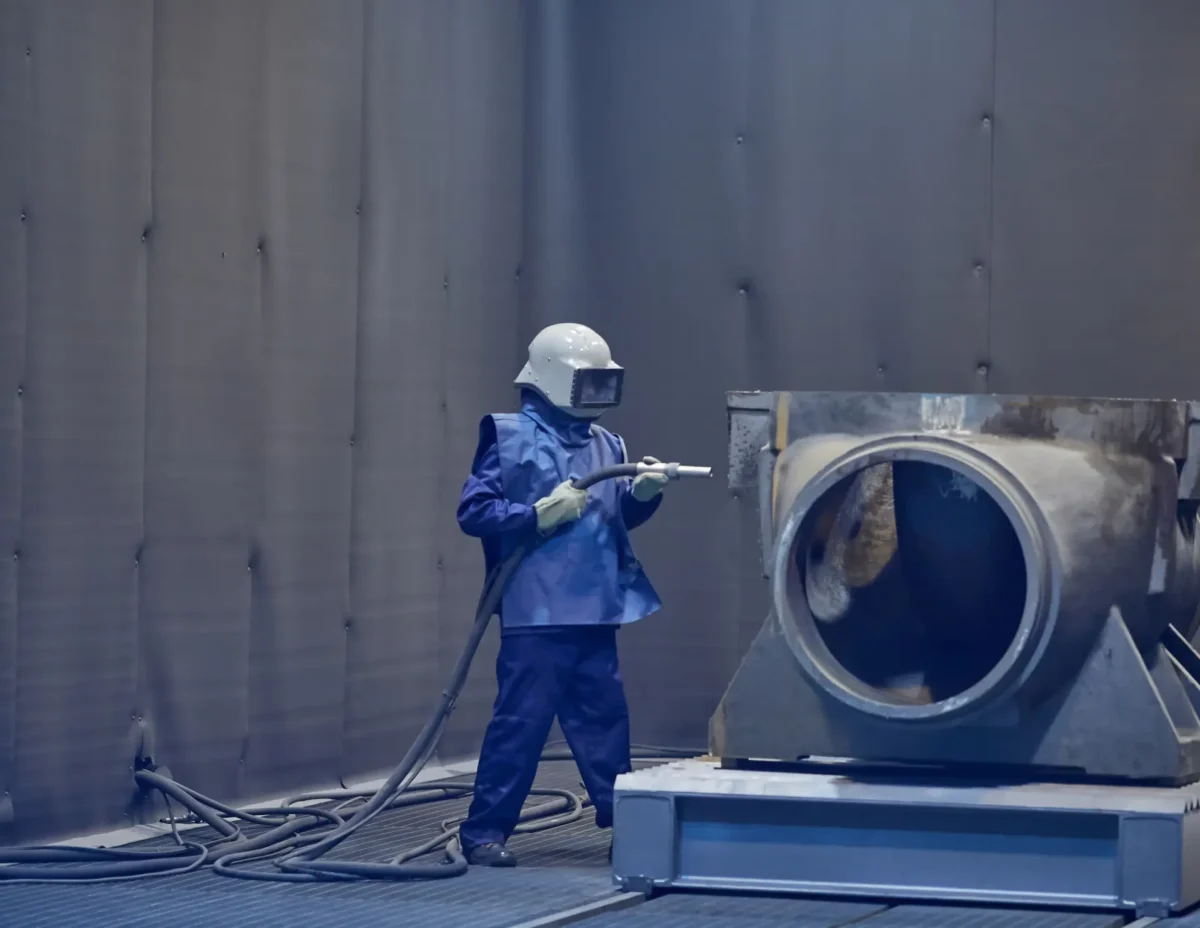Understanding the Inner Workings of Commercial Sandblasting Equipment

Posted on December 7, 2023 by Brent Phillips
Commercial sandblasting equipment is a powerful tool used in various industries for surface preparation and industrial cleaning. The equipment, also known as a sandblasting machine or abrasive blasting equipment, utilizes high-pressure air or water to propel abrasive materials onto surfaces, effectively removing unwanted coatings, rust, dirt, or contaminants.
The applications of commercial sandblasting equipment are diverse and widely used across industries such as water asset management, construction, automotive, manufacturing, and marine. It efficiently removes old paint layers, corrosion, and other surface imperfections to achieve a smooth and clean surface for optimal adhesion of new coatings.
Today’s blog is part one in a two-part series, where we’ll delve into the inner workings of commercial sandblasting equipment.
The First Three Components of Commercial Sandblasting Equipment
Commercial sandblasting equipment has six key components that effectively remove coatings and surface contaminants. In today’s blog, we’ll cover three of six parts.
- Air Compressor
- Sandblasting Pot
- Blast Media
We’ll discuss the other three components in our second blog this month, so stay tuned.
1. Air Compressor
The air compressor is crucial in supplying the power needed for abrasive blasting, also known as sandblasting. A suitable air compressor is essential to ensure optimal performance, efficiency, and results when sandblasting.
Different types of air compressors are suitable for sandblasting applications. The two most common types are reciprocating compressors and rotary screw compressors. Reciprocating compressors are typically used for smaller-scale sandblasting projects, while rotary screw compressors are more commonly used for large-scale industrial or commercial applications.
When hiring an industrial or commercial sandblasting company, it is crucial to understand that the company you hire uses the right equipment for the project. For instance, compressors are measured on the volume of air compressed in cubic feet per minute or CFM. It should meet or exceed the requirements of your project. Insufficient CFM below 50 to 100 can reduce blasting efficiency and result in inconsistencies.
In addition to CFM, pounds per square inch, or PSI, must also be considered. Industrial sandblasting requires higher PSI levels of 90 to 100 for large projects, such as water tanks and towers. It is crucial to ensure the coating experts can explain the optimal air compression needed to achieve effective abrasive blasting.
2. Sandblasting Pot
When it comes to sandblasting, having the right equipment is crucial for achieving superior results. One essential piece of equipment is the sandblasting pot, also known as a blast pot.
The component has a significant role in the sandblasting process in holding a specific abrasive material. Factors including portability, ease of use, and durability are essential.
- Portability is essential to meet project requirements at different locations.
- Ease of use refers to features such as ergonomic handles, user-friendly controls, and accessible maintenance points that enhance efficiency and convenience during operation.
- Durability ensures that the sandblast pot can withstand harsh working conditions and extended periods of use without compromising performance.
By carefully considering factors such as sandblasting equipment when choosing a sandblasting company, you can ensure that you’ve hired a company with reliable equipment that can effectively meet your project needs.
3. Blast Media
Blast media, also known as abrasive media, is crucial in various blasting processes, including a significant role in achieving the desired surface results for different applications.
Twelve commonly used blast media types vary in composition and characteristics. Each has unique properties that make it suitable for specific applications.
- Mohs hardness rating is used to determine the abrasiveness of the media and its ability to remove coatings or contaminants from surfaces.
- Friability grade of blast media refers to its ability to withstand repeated impact without breaking down too quickly. This characteristic is essential as it affects the longevity and effectiveness of the media during blasting operations.
- Surface profile refers to the texture or roughness created on a surface after blasting. Depending on grain shape and size, different blast media types can produce varying degrees of surface profiles.
- PSI requirements indicate the pressure at which the blast media should get propelled onto a surface for optimal results. It is essential to match the PSI requirements with the capabilities of the blasting equipment to ensure efficient and effective operations.
- The grain shape of blast media also influences its performance during blasting operations. Media grains can be angular, rounded, or irregularly shaped, which affects their cutting ability and impact on different surfaces.
Coming Up in Our Next Blog
Coming out in mid-December, we’ll delve into the last of three essential components of sandblasting equipment.
- Blast Hose
- Blasting Nozzle
- Dust Collector
In the meantime, if you have any questions or are looking for a top-notch sandblasting and protective coating expert, contact the team at Cunningham Inc. at (620) 848-3030.